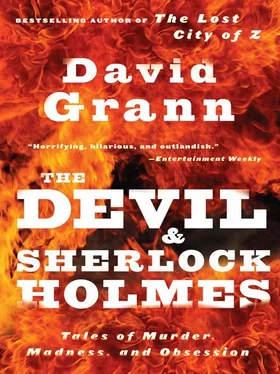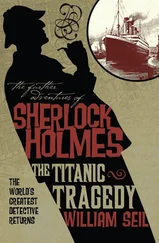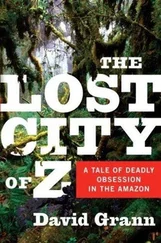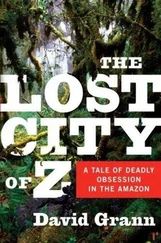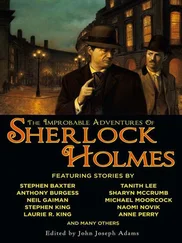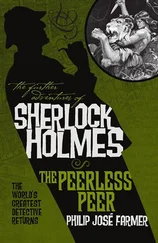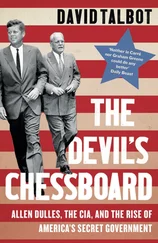“Even during the Depression, most men wouldn’t take these jobs,” one miner who was in the union with Nick Ryan recalled in an oral history. “Nobody was going to go down and work with a shovel all day and then work in compressed air. We had some hard, hard people, and you had to be a rough commander.… They told you, Do it or get the hell out. So the only ones, as the insurance adjusters will tell you, that survived were the most fit.”
Nick Ryan endured chest pains, broken limbs, bleeding sinuses, and caisson disease—the bends. Then, in 1937, with his family still in need of money, Nick Ryan took his eighteen-year-old son, Joe, down the shaft with him. “That’s how my father learned how to survive underground,” Jimmy Ryan recalled.
“Years ago, it started as a father-son business,” a sandhog whose father worked side by side with Joe Ryan told me. “The fathers brought the sons in, then the brothers brought the brothers in, and the sons brought the cousins in. I don’t know how you word this, but no one ever asked you your pedigree if you came here. They didn’t care if you had a criminal record—as long as you worked you could stay in the hole.”
Shorter and more compact than his father, Joe Ryan was known as Red. A ferociously driven and, to those who didn’t know him well, intimidating man, he carried the burden—and perhaps the anger—of someone who had given up a football scholarship at Wake Forest University to work underground, helping to support a father who was sometimes out too late to make it to work on time. After Nick Ryan died, in 1958, his son briefly ran a gas station. But before long he returned underground—to the place that he knew best.
By the fifties, the city was already in frantic pursuit of more “pure and wholesome water.” This time, it was not simply demand from an exploding population, or even droughts, that provoked alarm. This time, it was something that few, if any, had ever contemplated.
In 1954, unbeknownst to most residents of the city, several engineers went into a shaft to try to turn off the water supply in City Tunnel No. 1, to see if the tunnel needed repairs after being in operation for almost half a century. “Imagine your faucet after only ten years,” Christopher Ward, the D.E.P. commissioner, said. “These things had been pounded away at for decades.”
At the bottom of the shaft, sticking out of the tunnel, was a long bronze stem with a rotating wheel at the end. It was supposed to control the six-foot-diameter valve inside the pipeline. But when the engineers started to turn the handle, using all their might, it began to tremble and crack. “There was too much pressure on it,” Ward said.
“They were afraid if they turned it any more the whole fucking thing would break,” Richard Fitzsimmons, Jr., the business manager of the sandhogs’ union, said.
After decades of building the world’s greatest water system, the city had stumbled across its weak point, a single flaw that had rendered an otherwise invincible body mortal. “It scared the bejeezus out of people,” Doug Greeley, an engineer in charge of the city’s water distribution, said. There was no effective way to shut off the water, no way to get inside and weld a crack, no way to know if a tunnel was about to burst.
By the late sixties, officials had decided that something had to be done. “One of the original tunnels was seventy years old, and we were unable to repair any valves,” Ed Koch, who was a congressman at the time, recalled. In some cases, he said, “we didn’t even know where the valves were.” Koch, who later served three terms as mayor, added, “You can exist without food, but you can’t exist without water.”
On a cold January day in 1970, the ground was officially broken for the third water tunnel, which would dwarf both of its predecessors. Designed to be constructed in four stages, it would extend sixty miles, from the reservoir in Yonkers through the Bronx and down to the southern tip of Manhattan, and then into Brooklyn and Queens. The project would include another underground aqueduct. More important, at the center of the entire system would be thirty-four specially designed valves that would be made not of bronze but of stainless steel, with shorter stems that could withstand greater force. (Most were manufactured in Japan, where city inspectors lived for two years to insure that they were made according to precise measurements.) All of the valves would be contained in a single centralized chamber, where they could be easily reached and turned off.
Construction on the chamber began in 1970 and was not finished until 1998. Though the tunnel sections that will feed into the chamber have not yet been completed, the D.E.P. gave me a glimpse inside the vault—which is in the Bronx, not far from the sandhogs’ union hall. There is nothing above ground to indicate the vault’s existence except a small guard tower and a sealed door that leads into a grassy hillside. “Ordinarily, we’re not supposed to let anyone in,” Greeley told me, standing outside the door.
Like many of “the pencils,” as the sandhogs call the engineers, Greeley is a fastidious man: he has a neatly trimmed mustache and was wearing a blue blazer and a tie. The main door, which he unlocked as if it were a safe, was constructed out of solid steel. “They built this place during the Cold War,” he said. “It’s supposed to withstand a ten-megaton nuclear bomb.”
As he pressed his weight against the door, it gradually gave way, emitting a loud sigh. It was damp and cool inside; the corridor was made of concrete. After descending a flight of metal steps, we rode an elevator twenty-five stories down. As Greeley opened another thick door, he said, “Prepare to have your perception of the water supply permanently altered.”
The vault resembled an airplane hangar; it extended more than two hundred yards, with a domed ceiling that was forty-one feet high and walls that were cloaked in condensation and algae. Lights hung from the top like crescent moons. Suspended twenty feet off the ground, one after the other, were the valves, or, rather, the pipes that contained them: seventeen thirty-five-ton steel cylinders with studded bolts that reached horizontally from one side of the forty-two-foot-wide vault to the other. Each cylinder contained two valves. A metal gangplank ran alongside them, and Greeley walked excitedly to the first cylinder, running his hand along the torpedo-like shell. “This way, if a tunnel develops a crack, we can shut it off from here,” he said. “Everything’s right at your fingertips.”
If a valve broke, the cylinder could be lowered down to the bottom of the vault, and carried out on tracks. One piece, Greeley explained, could be removed without disrupting the rest of the system. The old tunnels had run in a straight line from the reservoirs into the city, but City Tunnel No. 3 was designed with various redundant loops (upper Manhattan has a loop; Brooklyn and Queens have a loop) that would pass through the chamber, so that parts of the city can be taken off-line without cutting the water supply entirely.
Putting his hand on a small wheel that jutted out of the cylinder, Greeley said, “Here we can turn the valves on and off electronically or, if there’s a power outage, even manually. Of course, if you did it manually, you’d have to turn it twenty-nine thousand times, but if you had to you could get a couple of guys down here and crank it away.”
It was cold in the chamber, and Greeley shuddered as he held out his hand to demonstrate another innovation. “They’re called butterfly valves,” he said of the sluices inside the cylinder. Unlike the old guillotine-like sluices, these gates rotated slowly into position. “That takes off the pressure and makes it easier to close,” he said, turning his hand clockwise. Though he had been in the vault dozens of times, he paused for a moment and looked out at the dozens of valves. Then he said, “Once the third water tunnel is finished, all the water in the city will flow like Zen.”
Читать дальше
